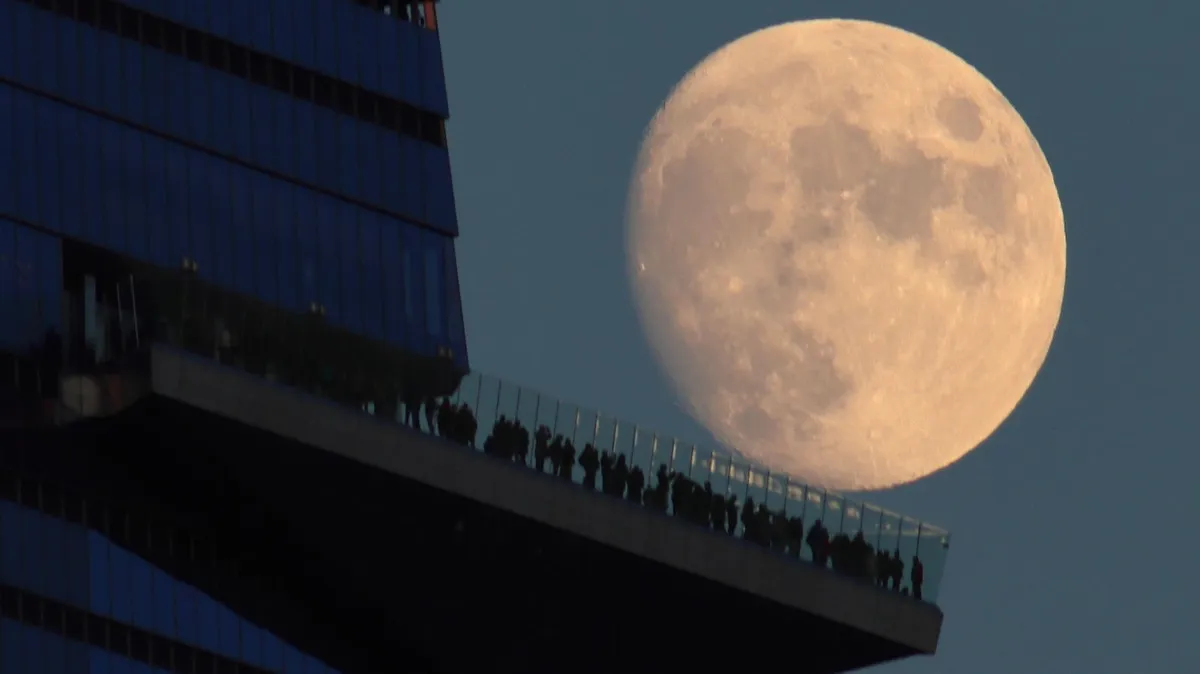
Skywatchers are in for a stunning visual treat on Monday, July 7, as the moon passes closely by one of the largest stars visible to the naked eye, Antares. Just a few days shy of being full, the moon will shine brightly, potentially obscuring some fainter stars in the night sky. However, Antares will be hard to miss, positioned in the upper right of the moon, creating a striking celestial pairing.
Antares is classified as a red supergiant star and is one of the most prominent stars in our sky. Ranking as the 15th brightest star visible at night, it is also one of the largest stars known to astronomers. To put its size into perspective, if Antares were to replace the sun in our solar system, its outer edge would extend between the orbits of Mars and Jupiter. According to BBC Sky At Night, this stellar giant is approximately 76,000 times more luminous than our sun.
The name Antares itself translates to "rival to Mars," derived from the Greek word "Ares," which refers to the planet Mars. This name is fitting, as Antares not only has a reddish hue similar to that of Mars but also finds itself in proximity to the planet during certain celestial events. As the brightest star in the constellation Scorpius, Antares is often referred to as the "heart of the scorpion," a nod to its significance in this well-known constellation.
To witness this celestial event, stargazers should head outside shortly after sunset to find a clear view of the southeastern sky. The moon, which will be around 92% lit in its waxing gibbous phase, will be visible long before darkness falls. As twilight deepens, Antares will emerge, glowing approximately four degrees above the moon.
At this time, the moon will be about 248,145 miles (399,350 kilometers) from Earth, while Antares resides an astonishing 550 light-years away, making it 13 million billion times more distant than our moon! In mid-northern latitudes, portions of the Scorpion's body will rise above the southern horizon during the summer months, allowing observers to spot the constellation's claws—Achrab, Dschubba, and Fang—visible above Antares.
To enjoy this spectacular sight, no special equipment is necessary—just your naked eyes and a clear sky oriented towards the southeast. However, using a stargazing app like Stellarium can enhance your experience by helping you locate the stars of Scorpius and other celestial formations.
If you're an early riser, make sure to set your alarm for Tuesday, July 8. You'll be treated to a bright display of Venus, which will reach its highest point in the morning sky during its current apparition. Although July 8 marks its peak visibility, Venus will remain an easy target in the pre-dawn darkness until around July 21. For specific timings, consider using a sunrise and sunset calculator, Stellarium Web for a detailed sky chart, or Night Sky Tonight for real-time positions and rise/set times for the planets.
Wishing you clear skies and wide eyes as you embark on this astronomical adventure!